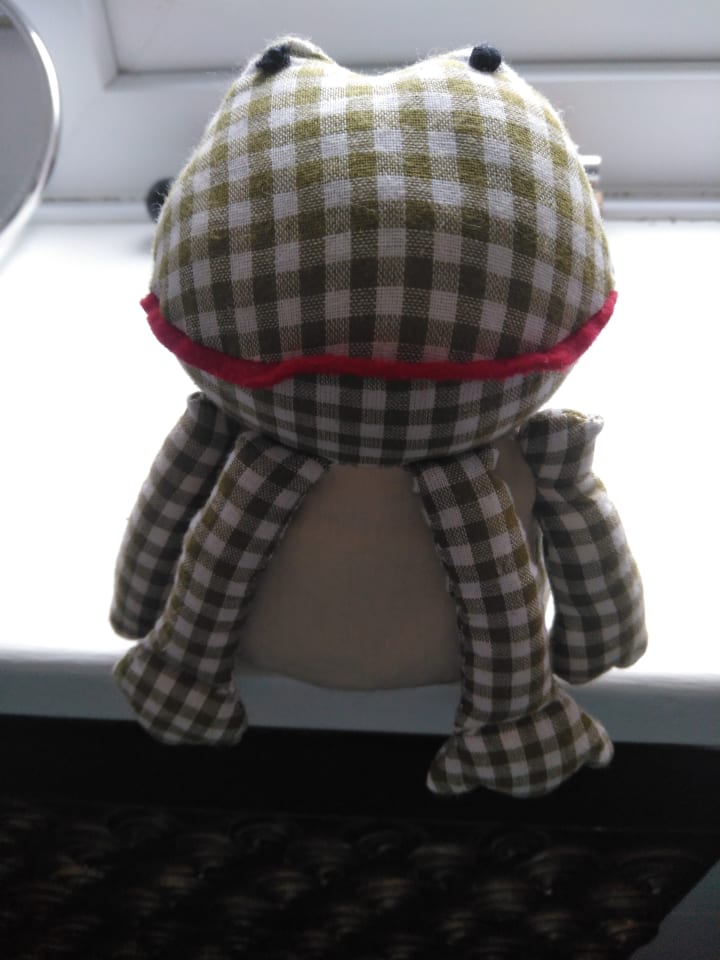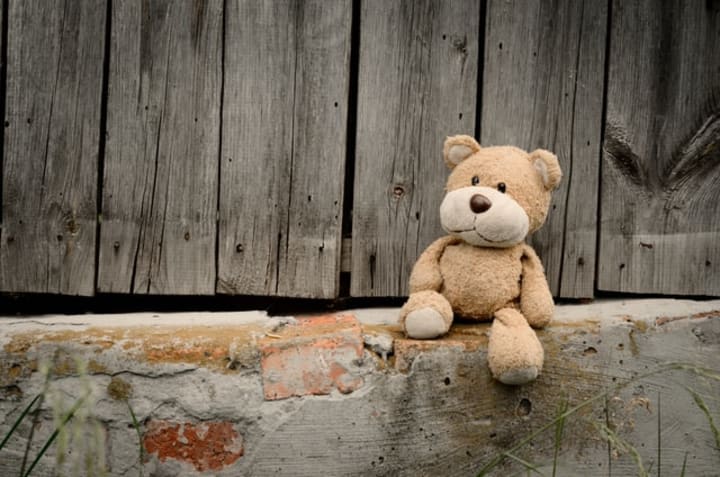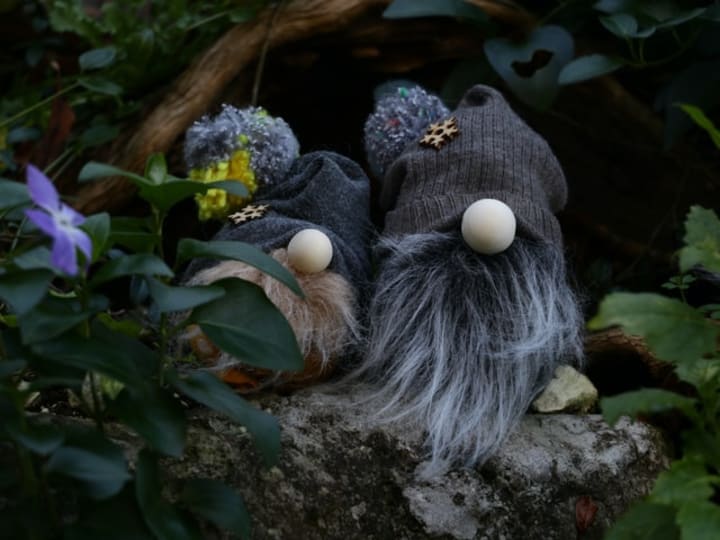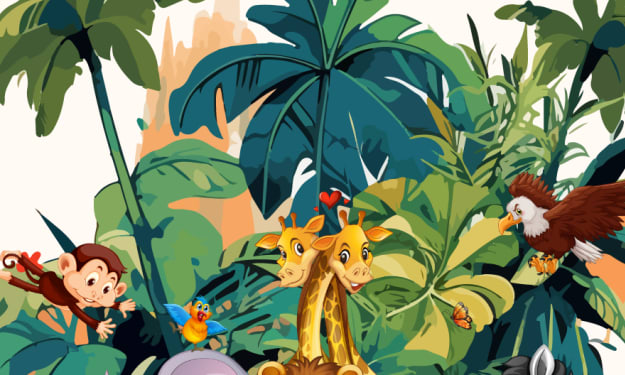To All the Stuffed Ones I've Loved Before
Probably lying disintegrated somewhere in another realm

Green check gingham-patterned frog is perched ever smiling on my window ledge, reminding me of how fantastic life is.
After snatching up said frog on impulse from a thrift store, I neglected to give this stuffed beacon of eternal joy a name but arbitrarily assigned him a gender. His assignment was simple: 1. Be forever cute and lovable. 2.Retain softness and remind me to smile (whenever he could get my attention.)

The raison d'être of stuffed animals or ‘stuffies’ any and everywhere is fulfilled in their cuddliness, remaining in fixed, open, receptive positions. They are given to young children in a silent but universally understood message, that wraps around delicate psyches before they have any earthly idea what a psyche even is.
Why are stuffed animals routinely given to children?
I had been pondering this thought beyond the surface answers of tradition and custom, wanting to probe just a little bit deeper. Maybe there was more to this. With England in its third coronavirus lockdown, plus days of sub-zero temps, greyness, and frequent rain, I definitely had the time to ponder away.
As it turns out, there’s research. Isn’t there always?
These soft toys fit within a category of transitional objects; a term first used in 1951 by psychoanalyst and pediatrician Donald Winnicott, to describe such attachments in early childhood development. These objects act as an extension of the primary caregiver role, reminding the child of parental love, nurturance, and protection.
And it does not end there. More than just toys, it has been observed that these fuzzy little critters also foster independence, aid in language development, limit stress as well as support children in dealing with overwhelming emotions.

All of a sudden, it dawned on me that in my chaotic transition to another country, I did not remember buying my three-year-old, at the time, a single stuffed toy. Even though he is now a healthy teen, looking back, I still felt bad.
But then a glimmer.
An inkling of a blip in my mind…
Cheap Cheeks!
A fluffy dual-purpose, cute, possibly squirrel or rabbit puppet (strangely dubbed Cheap Cheeks by my son), whose soft brown mane was to rid my then young charge of his thumb-sucking habit. I had picked him up from yet another thrift shop; however, he barely lasted a year before my son lost him. Once more saved from feeling-awful-mother-itis. Barely.
My son went on to set the Guinness World Record for losing loads of other things.
I distinctly remember securing a Tickle Me Elmo stuffed toy that was the primo toy of the late ‘90s for my three-year-old daughter. She happily played with it sometimes during the day, but it had to be hidden in the closet at night. “The eyes, Mommy,” she would say, fighting back fear, “those eyes are too scary looking at me.”
I noticed that they did kind of glow through the darkness.
Somehow, a long-forgotten memory was triggered on the frayed edges of my childhood.
My first early companion was a homemade stuffed turtle (or tortoise whose carapace collapsed.) My great aunt had stitched it together with a pink patterned fabric body and floppy white appendages. Genderless and nameless (I’m now seeing patterns here), Turtle served a crucial function. With googly eyes and a suitably flat head that fit snugly over my eyes like a blindfold as I lay down for the night, he kept me safe from cockroaches. These huge monstrous flying devils were the bane of my childhood (and adulthood) existence!
Disgusting vile invaders would crawl or fly into your house at all hours, no matter how clean or secure it was during the warmer months, but Turtle was an effective sentry and reigned supreme. The roaches knew better than to try anything with Turtle around.
Not one to go off gallivanting, frantic and relentless searches with my mother ensued when Turtle went MIA before bedtime. But a cramped body of pink and white would always later be found entangled in the laundry linens hamper or at the foot of my bed sandwiched between the bedsheets.

Sadly, a few short years later, Turtle mysteriously and permanently disappeared into the ethers allowing nightmarish bugs unrestricted entry; and enter they did!
I can’t help but think that Winnicott and his psychoanalyst buddies would have had loads of content for research had they known about Turtle and me. Maybe, I kind of cringe to think what research analysis would reveal about it now. Soooo, I won’t even look.
I was actually shocked by a few things myself today looking back on that period. Why was I frequently losing Turtle when Turtle’s role was so vitally important? Did I have a sadistic flying cockroach-induced death wish?! Did I ever even pick Turtle up to play with during the day? Four years old and exhibiting qualities of neglect already?! How does a turtle with the supernatural properties of the ultimate natural roach repellent, vanish from my existence? And why, oh why, didn’t I keep looking for him? I could have been rich!!! *Maniacal laugh*
I’m still trying to cut young mini-me some slack.
It has been reported that so-called stuffies help children learn and grow, but who knew how long we’d be ‘growing’. In 2013, one expert surmised that nearly 25% of college-bound young women brought along beloved stuffed animals from their childhood along for the transition.

And there are still many adults who feel an unashamed attachment to their childhood stuffed ones. Offering proof that well into sunset years, these little toys are still providing us with something special, as well as backing up more research inference that children actually interact with them as possessing a life essence.

In light of the evidence, that these plush velvety softies still influence us as adults, Sreedhari Desai in Defend Your Research, found that as a variable they could shape adult behaviors. Since, according to neuroscience, the chillout and feel-good hormone, oxytocin, is released when people are around children, Desai along with colleague Francesca Gino conducted control experiments where participants actually demonstrated better behavior and more kindness after being in environments with the fluffy darlings.
Well, shut my mouth!

Desai reasoned, “As a parent, you behave differently around kids. You don’t swear as much. You don’t want others to swear. But we’re finding that it’s not only the presence of a child that makes us feel this way; it’s the idea of a child.”
I hadn’t connected any dots that I had bought another little turtle, really tortoise, last year to grace my window ledge.
And I didn’t expect my meandering curiosity to take me so far down the rabbit hole, but the knowledge I gained from the journey wasn’t too shabby.

All these endearing superpowers of the soft stuff brigade make me wonder if they should run for office. Conduct a university lecture or two. Might solve global warming, reduce violent crime, or even eradicate a dreaded pandemic.
Hmmm…wishful thinking?
Next points to ponder: How well are world leaders, in general, doing on the above topics at the moment? Let me count the ways…
...
Still looking for 'ways' to count…
Looking...searching...
Got a green crotchet tortoise that’s not too busy, though.

About the Creator
Reader insights
Outstanding
Excellent work. Looking forward to reading more!
Top insights
Excellent storytelling
Original narrative & well developed characters
Heartfelt and relatable
The story invoked strong personal emotions
Easy to read and follow
Well-structured & engaging content
On-point and relevant
Writing reflected the title & theme
Expert insights and opinions
Arguments were carefully researched and presented
Compelling and original writing
Creative use of language & vocab
Eye opening
Niche topic & fresh perspectives






Comments (7)
Awww, this had me thinking of my childhood stuffed animals. Thank you for sharing you story.
That sounds like ADHD, or maybe ADD. Losing things is very common.
Charming & Insightful!
wonderfully written and informative. I think I still have a few stuffies laying around somewhere.
This is both an interesting and informative story.
A wonderful story
Fabulous story!!!💖😊💕